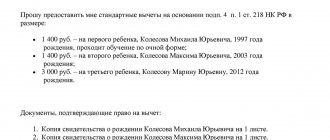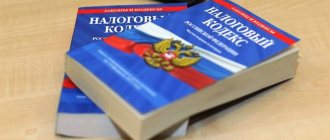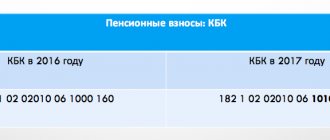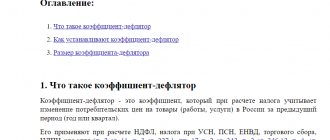For individual entrepreneurs using PSNO, the object of taxation is the potentially receivable annual income from a “patented” type of business activity (the monetary expression of this income is the tax base). The amount of potential income does not depend on the individual entrepreneur itself; it is established by regional authorities (enshrined in the law of the constituent entity of the Russian Federation), and the tax inspectorate records it directly in the patent. At the same time, it should be taken into account that the Tax Code provides for the maximum possible amount of said income. Our task is to make sure that the monetary value of the potential income specified in the patent is not overestimated.
Let us recall that the types of activities in which individual entrepreneurs can use PSNO include (clause 2 of article 346.43 of the Tax Code of the Russian Federation):
- activities related to the provision of cook services for preparing dishes at home (clause 31). The Ministry of Finance in Letter No. 03‑11‑11/315 dated October 19, 2012 indicated that in this case we are talking about the preparation of dishes at the customer’s home on the basis of an agreement concluded with him for the provision of relevant services. But the entrepreneurial activity of a businessman-cook in preparing dishes at home for their subsequent sale to the population is not subject to taxation under the PSNO. The same clarifications were published on the official website of the Federal Tax Service on the Internet on January 17, 2013 in the “News” section;
- activities related to the provision of public catering services through catering facilities with a customer service area of no more than 50 square meters. m for each such object (clause 47);
- activities related to the provision of public catering services through catering facilities that do not have a hall serving visitors (clause 48).
New activities for patent in 2021
For many years, the list of activities for the patent system has remained unchanged. Now the state transfers to the regions the right to edit it at their own discretion. At the same time, the updated tax code will contain an approximate list that regional authorities can use as a guide.
At the federal level, the list of types of patent activity has been supplemented with new items:
Services:
- parking for vehicles;
- pet care;
- plowing gardens and cutting firewood for the population.
Repair:
- toys and similar products;
- tourist and sports equipment;
- glasses;
- siphons and autosiphons, including charging gas cartridges for siphons.
Works:
- engraving machines for metal, glass, porcelain, wood, ceramics, except jewelry (by order of the population);
- glasses assembly;
- production and printing of business cards, invitations to family celebrations;
- grain grinding, production of flour and cereals from wheat, rye, oats, corn or other grains;
- production and repair of cooper's utensils and pottery according to individual orders of the population.
In addition, the wording of the names of some types of activities has been changed. The full list of amendments can be found here.
An important amendment is the increase in the “threshold” of area for retail trade and catering. Previously, shops and cafes with a sales or service area of more than 50 sq. meters could not buy a patent. Now this condition has been changed, and a patent can be issued if the area does not exceed 150 square meters. meters _ This amendment will allow more retail stores, cafes and restaurants to switch from UTII to patent.
What is potential income
The patent form of taxation, along with imputation, is a simplified form of tax payment and is aimed primarily at small and ultra-small businesses. This is the reason for a number of features:
- When purchasing a patent, you do not need to use a cash register
- No need to file tax returns
- No accounting required
But besides the positive, there is also a fly in the ointment:
- The patent is calculated based on the approved amounts of potential income;
- There is a limit on the amount of hired labor and actual revenue
- It is necessary to pay contributions separately (with the simplified tax system and UTII, the tax amount is reduced by this amount)
As you can see, the amount of potential income is the basis of the patent taxation system.
So what is this potential income for a patent?
Potential income is an estimated amount approved by the relevant regional authorities for tax purposes. To put it simply, it is the hypothetical level of profit that the state taxes. At the same time, the state says (figuratively):
Pay 6% of the possible profit of 100 thousand rubles per year and you can earn as much as you want. The truth immediately sets restrictions on the maximum amount of revenue; today, the total gross revenue from a patent cannot exceed 60 million rubles per year.
That is, receiving maximum revenue from a patent of 60 million rubles, the individual entrepreneur pays 6% tax based on the potential income approved by local authorities.
Benefits when switching from UTII to a patent
When switching from UTII, you can buy a patent for the first three months of 2021 “at a discount”, at a reduced cost. This benefit is only available to those who:
- provides parking services for vehicles;
- conducts retail trade through a stationary retail chain with a sales area ranging from 50 to 150 square meters. meters for each trade facility.
- provides catering services through facilities with a service area ranging from 50 to 150 square meters. meters for each catering facility.
- provides repair and maintenance services for cars, motorcycles, machinery and equipment, vehicle washing, polishing, etc.
If in the 4th quarter of 2021 you applied imputation for these types of activities, then you have the right to apply for a patent at a reduced price for the first quarter of 2021. When calculating the cost, the monthly basic profitability established by law and the area of the parking lot or sales area/service area are taken into account, and when providing repairs, the number of employees, including the individual entrepreneur himself.
Do you need advice on the transition from UTII?
Leave a request and we will call you back and tell you how to resolve any accounting issues.
Submit your application
* * *
The amount of income potentially receivable by an individual entrepreneur, which serves as the base for the tax paid in connection with the use of PSNO, is established by the tax authority on the basis of the law of the constituent entity of the Russian Federation.
Moreover, this income cannot exceed the maximum amount in relation to the relevant activity as a whole, and not, for example, to a separate object used in the activity. At the same time, it is worth remembering: although the actual income received does not affect the amount of tax liabilities of an entrepreneur using PSNO, their amount from the beginning of the calendar year for all “patent” types of activities should not exceed 60 million rubles. Otherwise, the right to stay on the PSNO will be lost (clause 6 of Article 346.45 of the Tax Code of the Russian Federation). Public catering enterprises: accounting and taxation, No. 2, 2021
The patent can be reduced by insurance premiums
Another “benefit” that allows you to reduce the damage from switching from UTII to a patent is the ability to deduct insurance premiums paid for yourself and your employees from the cost of the patent.
The following are accepted for calculation:
- insurance premiums paid during the tax period for yourself and for employees;
- payment for sick leave for the first 3 days of illness;
- contributions for voluntary personal insurance of employees.
Important! If an entrepreneur has hired employees, then the cost of a patent can only be reduced by 50% through contributions. If he works alone, then the tax can be reduced by the entire amount of contributions paid for himself.
If an entrepreneur has several patents, and the amount of contributions paid exceeds the cost of one of them, it can be taken into account against the cost of another patent valid in this tax period.
Determining the Income Potential for a Patent
Today there are two options for determining the potential income for a patent
- Option one and the simplest. without the involvement of hired labor and has one object of taxation, this, for example, applies to a patent for rent. In such cases, we go to our personal account on the website of the Federal Tax Service of Russia and find our regional law with approved amounts of potential income in .
It is worth remembering that in connection with. Local authorities received the right to diversify the amount of potential income both by type of activity (this was the case before) and by municipal units. In practice, this means that in different cities of the same region there will be completely different amounts, while the legislator removed the minimum bar, leaving only the top 1 million rubles per year.
It is simply not realistic to give examples of all rates, there is too much information, but the system itself is simple, find your type of activity and municipal unit (where you will carry out activities) and multiply the amount of approved income by 6%. Thus, we get the real cost of the patent to be paid.
- Option two – if an individual entrepreneur has hired labor or several objects (vehicles, rental). This option implies a first step similar to option No. 1, but in addition it must be taken into account that local authorities have the right to increase the amount of potential income depending on the number of employees or facilities, in this case we multiply by the number of units of account (for example, by 2 employees) and at a rate of 6%.
It must be remembered that the law has introduced restrictions on the maximum amount of increase in potential income:
- no more than three times - for the types of business activities specified in subparagraphs 9, 10, 11, 32, 33, 38, 42, 43 of paragraph 2 of Art. 346.43 Tax Code of the Russian Federation; (transport OKVED, funeral services)
- no more than five times - for all types of business activities for which the patent taxation system is applied, carried out in the territory of a city with a population of more than one million people; (all other activities are patented)
- no more than ten times - for the types of business activities specified in subparagraphs 19, 45 - 47 of paragraph 2. 346.43 of the Tax Code of the Russian Federation (for rental and retail trade through stores)
How potential income changes
There are two main formats for changing potential income for calculating a patent:
Option one is changes to regional laws. In fact, they can be revised every year based on political or socio-economic reasons. In practice, the maximum amounts are not changed. True, 2015 will be exceptional, since regions have the opportunity to differentiate by municipal units. Based on this, the tax base will almost certainly change.
Option two – by the amount of the deflator coefficient. Such increases take place every year on the basis of an order, which introduces a coefficient for all special systems by which the amount of potential income is increased.
Previously on the blog pages, for the patent taxation system it will be 1.147. Calculation example:
With an approved income of 100 thousand rubles, for 2015 such income will be:
100,000 rubles * 1.147 (coefficient - deflator for patents) = 114,700 rubles
. It is from this amount that we calculate the tax payable
114,700 rubles * 6% (rate) = 6882 rubles tax per year of work.
Potential annual income
The amount of potential annual income is established by regional legislation. As a general rule, it is approved for one year. However, if the region does not issue a law with income for the next year, then its previous amount will apply (clause 2, letter of the Ministry of Finance of Russia dated October 4, 2013 No.).
It is best to obtain a patent, which will be valid from the beginning of next year, not earlier than December of the current year, because in this case you can be sure that the amount of tax that the inspectorate will calculate will remain unchanged.
There is some subtlety here, which lies in the fact that regional laws on changes in potential annual income are usually issued in October-November of the current year. If a new law is not issued by December, this means that regional authorities have decided to leave the same amount of income for the next year.
For example, an entrepreneur filed a patent application with the inspectorate in October. The inspectorate has no right to refuse to obtain a patent. Therefore, she will issue him a document, calculating the tax based on the current amount of potential income for the current year. And in November, regional authorities issued a law that increases the income indicator for the next year. In this case, the inspectorate will recalculate the tax upward and issue the entrepreneur a new patent.
For a list of regional laws in which you can see the current amounts of potential income, see the table below.
The potential annual income established by the regions must be within the maximum limit. The basic level of maximum income is RUB 1,000,000. This size limit is subject to . Thus, in 2015, the potential annual income established by the region should not exceed 1,147,000 rubles.
At the same time, for certain types of activities, constituent entities of the Russian Federation are given the right to increase the upper limit:
no more than three times – for the following types of activities:
- maintenance and repair of motor vehicles, machinery and equipment (subclause 9, clause 2);
- transportation of goods by motor transport, water transport (subclause 10, 33 clause 2 of article 346.43 of the Tax Code of the Russian Federation);
- transportation of passengers by motor transport, water transport (subclause 11, 32 clause 2 of article 346.43 of the Tax Code of the Russian Federation);
- medical or pharmaceutical activities (subclause 38, clause 2, article 346.43 of the Tax Code of the Russian Federation);
- ritual services (subclause 42, clause 2, article 346.43 of the Tax Code of the Russian Federation);
- funeral services (subclause 43, clause 2, article 346.43 of the Tax Code of the Russian Federation);
no more than five times
– for any type of activity, if such activity is carried out in a city with a population of more than 1 million people;
no more than 10 times
– for such types of activities as leasing of own premises (dachas, land plots), as well as retail trade and catering services (subclauses 19, 45–47, clause 2, article 346.43 of the Tax Code of the Russian Federation).
Subjects of the Russian Federation can set the amount of potential annual income:
- by group of activities;
- separately for each type of activity, provided that such differentiation is provided for by OKUN or OKVED;
- depending on the average number of employees;
- depending on the number of vehicles;
- depending on the carrying capacity of vehicles, the number of seats in the vehicle;
- depending on the number of separate objects (areas) of retail trade and catering (for the relevant types of activity);
- depending on the number of separate objects (areas) transferred for rent (hire). Determine the number (area) of such objects on the basis of lease agreements;
- depending on the place of business (i.e., the territory of the patent).
Note: With such differentiation, the potential annual income obtained by calculation should not exceed its maximum.
Is it possible to sell beer and cigarettes on patent in 2021?
As we wrote earlier, a patent is not suitable for the sale of a number of marked and excisable goods. However, beer, cigarettes, and clothes do not belong to them. At the time of writing, the patent prohibits the sale of only:
- medicines;
- shoes;
- fur clothes;
- cars, motorcycles, motor oils, gasoline, diesel fuel.
The sale of these goods does not relate to retail trade, and therefore cannot be carried out under the patent taxation system. Legislative justification: Tax Code of the Russian Federation, Article 346.43, clause 3.
The remaining marked and excisable goods can still be sold under any taxation system, including a patent.
The cost of a patent is calculated using the formula:
GD
x
6
%,
where: GD
- potential annual income.
Note: Different for each region of the Russian Federation
6
% — tax rate ()
The law of a subject of the Russian Federation indicates the value of the potential ( GD
) for each type of business activity. The amount of potential income is set for one calendar year. If the law of the subject does not change the annual income for the next calendar year, then the income established for the previous year is valid.
If you do not keep the Book, you will be fined 10,000 rubles. ().
Tax rate
The tax rate for calculating the value of a patent is 6 percent.
This rate is established by paragraph 1 of Article 346.50 of the Tax Code of the Russian Federation.
Crimea and Sevastopol
In Crimea and the city of Sevastopol in 2021, the rate is 1 percent (Article 3.1 of the Law of the City of Sevastopol dated August 14, 2014 No. 57-ZS, Article 2 of the Law of the Republic of Crimea dated December 29, 2014 No. 62-ZRK/2014 ). In both regions, this benefit is not conditional and is given to all entrepreneurs in the patent system.
The right to establish a reduced tax rate is granted to the authorities of Crimea and the city of Sevastopol by the norms of paragraph 2 of Article 346.50, paragraph 7 of Article 12 of the Tax Code of the Russian Federation.
Tax holidays
The authorities of any region of Russia have the right to set a rate of 0 percent (tax holiday) for entrepreneurs who:
- conduct activities in the production, social and (or) scientific fields, as well as in the field of consumer services to the population;
- registered for the first time after the entry into force of the regional regulatory act introducing a zero rate. If an entrepreneur first deregistered and then registered again, he does not have the right to apply a zero rate (letter of the Ministry of Finance of Russia dated January 26, 2015 No. 03-11-10/2204).
Specific types of activities in the production, social and (or) scientific spheres, as well as in the field of consumer services to the population, are established by the constituent entities of the Russian Federation.
The list of regions of the Russian Federation that have introduced tax holidays on their territory is given in the table.
At the same time, regional authorities may introduce restrictions on the application of the 0 percent rate. In particular, in the form:
- restrictions on the average number of employees;
- restrictions on the maximum amount of income from sales for a preferential type of activity.
An entrepreneur has the right to apply a 0 percent rate from the date of his registration for two continuous tax periods within two calendar years. And, according to the financial department, it is possible to apply the benefit for two years in a row even when at the end of the first year of activity the regional law on vacations has lost force. After all, according to officials, the wording in the law “this law is valid until December 31, 2021” limits the duration of the law, and not the period of validity of the zero rate. Such clarifications are given in the letter of the Ministry of Finance of Russia dated August 13, 2015 No. 03-11-10/46827.
When an entrepreneur conducts several types of activities, one or more of which fall under the 0 percent rate, he is obliged to organize separate accounting of income.
If a businessman violates the conditions for applying the 0 percent rate, then he will be required to pay tax at a rate of 6 percent, and for entrepreneurs in Crimea (Sevastopol) - at their regional rate.
This follows from the provisions of paragraph 3 of Article 346.50, paragraph 7 of Article 12 of the Tax Code of the Russian Federation.
Regional authorities can set a zero rate for entrepreneurs on a patent for any period until December 31, 2021. From January 1, 2021, the benefit will cease to apply (clause 3 of article 2 of the Law of December 29, 2014 No. 477-FZ).
Potential annual income by region, Patent cost calculation 2021
Tax calculator - calculating the cost of a patent” has launched on the official website of the Federal Tax Service
" The service is intended for individual entrepreneurs and individuals who are going to become entrepreneurs using the patent tax system.
The service allows you to calculate the amount of tax according to the patent tax system. To do this, you need to select the territory and type of business activity from the list, and also fill in the details necessary for the calculation in the window that opens.
Based on the calculation results, you can see the amount of tax expected to be paid for a certain type of business activity and the established deadlines for paying the tax.
A change of tenant is not a reason for an entrepreneur to purchase a new patent
If the tenant of one of the properties leased to individual entrepreneurs on PSN has changed, then in this situation you will not have to obtain a new patent. The main thing is that this property is indicated in an existing patent.
Note: Letter of the Federal Tax Service of Russia dated December 5, 2014 N GD-4-3/
The Ministry of Finance previously held the same opinion.
Note: Letter of the Ministry of Finance dated October 7, 2013 No. 03-11-11/41513
The situation would be completely different if you first rented out the property to one tenant, and then decided to “settle” several more in this area. Then we would have to obtain new patents. After all, the number of objects for PSN purposes is determined precisely by the number of lease agreements.
Note: Letter of the Ministry of Finance dated 09.09.2013 No. 03-11-12/36942
CALCULATOR for calculating the cost of a patent for an entrepreneur
For patents with a term of up to six months, the entire cost of the patent is required no later than the expiration date of the patent. And patents for a period of six months or more must be paid in two installments. The first payment is made no later than 90 days from the start of its validity, and the second payment is made up to and including the last day of validity of the patent.
| The best way to express gratitude to the author |
- Features of the patent tax system
- Rules for calculating tax in the patent tax system
Calculating the income of an individual entrepreneur on a patent has its own characteristics. In this case, the tax base is the basic profitability, which is prescribed in the legislation, and not the income actually received by the entrepreneur.






